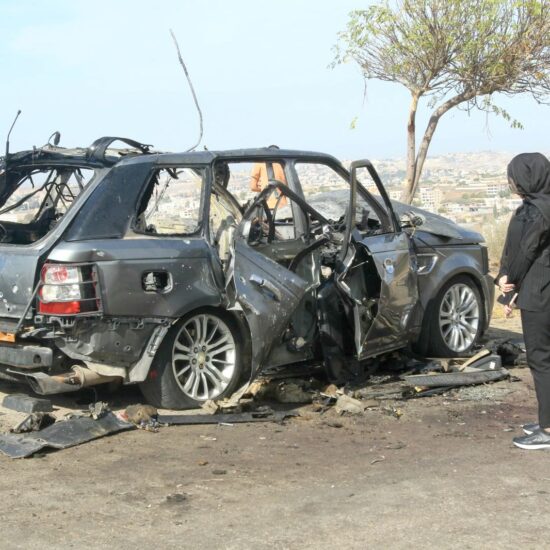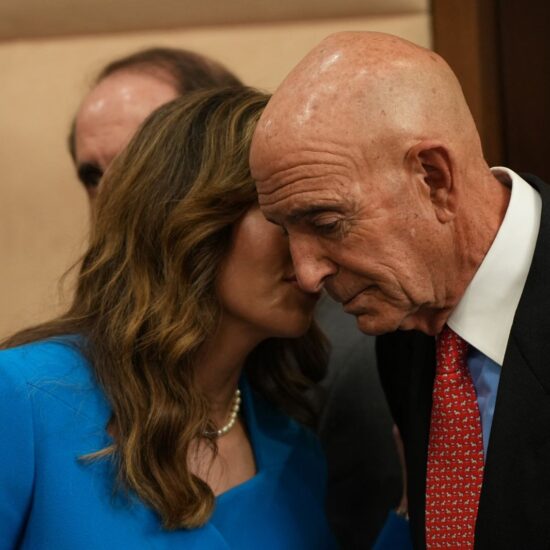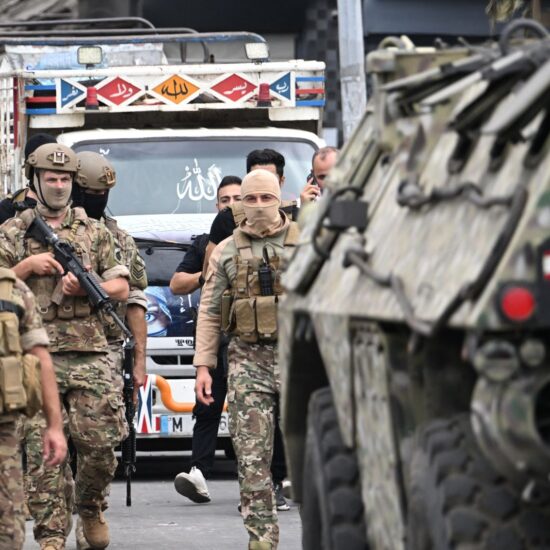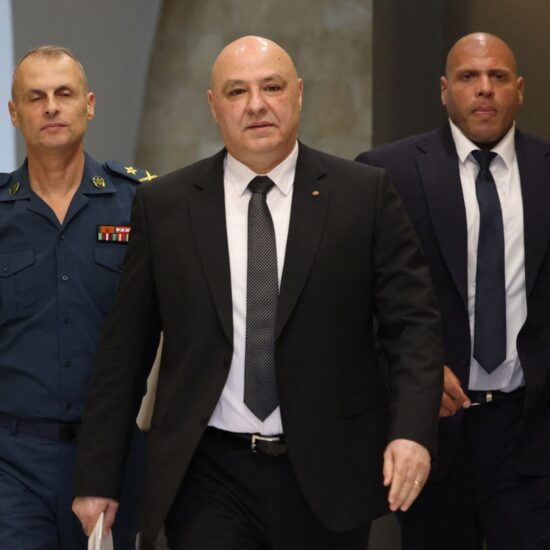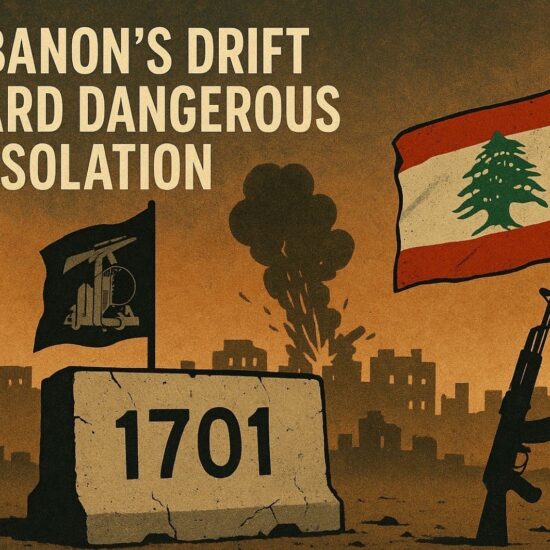
After Hamas carried out its deadly attack on Israel on October 7, all eyes in Lebanon went directly to the South and Lebanon’s border with Israel.
Was this a multiple-front attack with Hezbollah – or at least Hamas with Hezbollah’s blessing – also launching its own operation in coordination with Hamas in Gaza?
It quickly became clear that Hamas in Gaza was carrying out the attack on its own, but that did little to assuage fears that this could change and Hezbollah could join the war.
Those fears, to a certain degree, were justified as the following day, October 8, Hezbollah and its Palestinian allies began launching limited operations from Lebanon.
These attacks for the first week and a half, though, were largely limited and confined to brief off-and-on clashes which helped some to breathe a slight sigh of relief. While there may have been clashes on the border, the situation was a far cry from that of July 2006 when a destructive and full-scale month-long war broke out that saw widespread destruction in Lebanon’s South.
The situation, however, has seemingly begun to escalate, with the clashes going from brief one-off events to hours-long back-and-forth fighting.
#Hezbollah took credit for the attacks on the Israeli military sites today with both sides launching more attacks on the other.
Aitaroun also continued to be heavily bombarded on its outskirts. A car in the village was hit causing injuries to one passenger. #حزب_اللہ #إسرائيل pic.twitter.com/jFdNKtyt85
— Nicholas Frakes | نيكولاس فريكس (@nicfrakesjourno) October 22, 2023
The conflict on the Lebanese-Israeli border is still far from being a full-scale war, but the fighting has become much more intense as Hezbollah has started launching several attacks on Israeli military sites per day, with Israel responding in kind, targeting Hezbollah anti-tank guided missile (ATGM) squads, Hezbollah military positions, and the outskirts of villages.
View this post on Instagram
Despite the fighting being concentrated and, to a degree, limited, the increase in the intensity of the clashes has once again raised concerns that the situation could quickly spiral out of control and lead to a new war between Hezbollah and Israel.
Some in South Lebanon were compelled to escape further north, as many remember what happened in the last war. In some villages on the border, such as Ain Ebel, the majority of their residents have left for Beirut for safety.
Both Hezbollah and Israel, while using strong words against each other, have hinted that they do not have any interest in engaging in another war for the time being, but developments in Gaza could ultimately change that.
Many Western governments have spoken with caretaker Prime Minister Najib Mikati about keeping Lebanon out of the war despite the fact that Mikati has no say in whether or not a war breaks out in the South.
If a war does break out between Hezbollah and Israel, it is unlikely that either side would be destroyed. But the people of Lebanon’s south would suffer immensely.
In Lebanon
Storm the gates: After news broke of a bombing at al-Ahli Hospital in Gaza (more on that later) enraged protesters in Lebanon gathered at the US Embassy to make sure the US, which is the biggest supporter of Israel, knew of their anger.
On the night of October 18 and the afternoon of October 19, protesters clashed with security forces and the Lebanese Army as they threw rocks at the embassy and set a nearby building on fire.
The fighting was fierce as anger boiled over amid the news that nearly 500 people had been killed in a single moment.
While many in Lebanon could sympathize with the protesters’ anger, others took it another way and attacked the protesters using racist and sectarian language.
Charles Jabbour, the head of the Lebanese Forces media and communication department, told the protesters to “not invade our areas” while speaking of Awkar where the US Embassy is located and calling the protesters “ugly” people who “do not resemble us” and that “we do not want to get to know you.”
Businesses and institutions associated with the US were targeted – such places like McDonald’s, Starbucks and the American University of Beirut (AUB) despite McDonald’s and Starbucks being locally owned through the companies’ franchising policy.
Videos online also showed people, one appearing to be wearing a flag belonging to Hezbollah, breaking the lights outside AUB.
The protests in Lebanon, however, were short-lived and did not continue after the 19th, though large protests erupted globally in support of Gaza and Palestine.
The damage has since been repaired, but, as the war goes on, these places could become targets of people’s anger once more.
On the (border) fence: Israeli Prime Minister Benjamin Netanyahu visited Israeli troops based on the Lebanese-Israeli border on October 22 as clashes with Hezbollah have steadily escalated.
During his visit, he gave a stern warning to Hezbollah against joining the war, saying that it would be much worse than July 2006.
During a visit to the #Lebanon–#Israel border, Israeli PM Benjamin Netanyahu said #Hezbollah would face a war worse than what took place in 2006 if it decided to join the war, but added that there was no confirmation Hezbollah had decided to join yet. #حزب_الله #لبنان #إسرائيل
— Nicholas Frakes | نيكولاس فريكس (@nicfrakesjourno) October 22, 2023
It has been reported that Israeli Defence Minister Yoav Gallant was in favor of a preemptive strike against Hezbollah but was ultimately overruled by the war cabinet.
Grounded: Flights to and from Lebanon are becoming increasingly limited amid the ongoing conflict in the South, with Saudi Airlines saying that they would not have any flights to Lebanon until at least the end of the year while the German-operated Lufthansa announced that it was suspending flights to Beirut.
Lebanon’s own national airline, Middle East Airlines (MEA), has also been affected by the fighting, announcing that it was keeping several of its planes in Turkey in case a war breaks out.
MEA also announced that, due to insurance reasons, only eight of its 22 planes would be operating.
Get out: An increasing number of countries are urging its citizens to leave Lebanon and avoid traveling there amid the ongoing conflict.
The United States, Germany, Saudi Arabia, France, Oman, Russia, Syria and others have all issued statements calling on its citizens in Lebanon to come back as quickly as possible over fears of a war breaking out.
Saudi Airlines says that it is canceling its flights to #Lebanon until (at least) Oct. 31.
This comes as several countries, such as #SaudiArabia, #Germany, #France, #Netherlands and #UnitedStates, have urged their citizens to leave the country because of the war. #لبنان
— Nicholas Frakes | نيكولاس فريكس (@nicfrakesjourno) October 20, 2023
It is not currently clear how many foreign nationals have decided to leave Lebanon.
Another building comes down: Amid all of the fighting on the Lebanese-Israeli border, many in Lebanon paid attention to little else as they followed every update and every bomb that fell on the south.
So it is not surprising that news of the collapse of a building in Mansourieh last week might have been missed.
The building collapsed on October 16, killing eight, with four women safely recovered from the wreckage. The search and rescue operation was called off on October 21.
The cause of the collapse is currently unknown, but much of Lebanon’s infrastructure is in disrepair and a strong storm could cause significant damage – such as the case with a building in Daher al-Maghr in Tripoli which collapsed after a stormy night in 2022.
Neighborly visit: Lebanon’s caretaker foreign minister, Abdallah Bou Habib is currently in Damascus where he met with his Syrian counterpart Faisal Mekdad.
During his meeting with Mekdad, the two condemned the Israeli siege and bombardment of Gaza.
They also discussed finding a way to return displaced Syrians in Lebanon back to Syria.
The presence of Syrian refugees in Lebanon has been a hot-button issue, with many in the political class using it as a chance to blame the refugees for the problems that Lebanon is facing, specifically the economic crisis.
In the region
No safe place: On the evening of October 18, a bomb fell from the sky and struck al-Ahli Hospital in Gaza, killing, what the Health Ministry in Gaza says, were 471 people, many of whom were at the hospital seeking shelter from the constant Israeli bombings.
Hamas, and nearly everyone in the Arab world, was quick to blame Israel for the bombing, but Israel pushed back, saying that it was a rocket fired by Islamic Jihad that had fallen from the sky. The US was quick to support Israel’s claims. Various independent investigations, such as one conducted by Forensic Architecture, a research group based at the University of London, looked at the evidence provided by Israel and cast significant doubt on Israel’s claims.
Preliminary analysis by FA, @alhaq_org & @earshot_ngo into the #AlAhli hospital blast in Gaza casts significant doubt on IOF claims that the source of the deadly explosion was a Palestinian-fired rocket travelling west to east. pic.twitter.com/PtYtP9l81j
— Forensic Architecture (@ForensicArchi) October 20, 2023
Even after the tragedy of the hospital bombing, Israel did not even pause its bombing campaign of Gaza.
On October 19, Israel destroyed the Greek Orthodox Church of St. Porphyrius, the oldest church in Gaza.
Released: After nearly two weeks in captivity, Hamas released two of the over 200 hostages that it took during its October 7 operation.
Judith and Natalie Raanan were released with the help of Qatari mediation for “humanitarian” reasons.
So far no other prisoners have been released, but the US is hopeful that further negotiations could yield results.
Hamas has stated that it was willing to release all foreign hostages once the situation calms down.
Late afternoon on October 23, Hamas released another two hostages, this time elderly Israeli women.
Aid: When Israel began its counteroffensive against Hamas in Gaza, it laid siege to the enclave. No food, no water and no fuel would get in.
Under international pressure, however, Israel did allow a few dozen aid trucks to pass through Egypt’s Rafah border crossing.
While aid workers have said that these convoys will help, they are a far cry from what is needed to truly help the over two million people trapped in Gaza. Fuel, which was not allowed in the convoys, is also desperately needed to keep hospitals running.
With Israel poised to start its ground invasion of Gaza, it is unclear how many aid convoys will actually be able to make it through.
A new campaign: Since the announcement that Israel was planning on wiping Hamas off the face of the planet, there has been talk of Israel’s ground invasion of Gaza.
However, since then, there have been several reports that the invasion would occur imminently, only for it to never come, even over two weeks into the war.
Part of this is believed to be from US pressure in the hopes of continuing hostage negotiations.
Many experts have been quick to point out that a ground invasion will be long, brutal and will likely kill many more innocent people.
The wartime president: US President Joe Biden made a seven-hour visit to Israel on October 19 where he once again pledged his support to Netanyahu.
Biden’s visit could not come at a worse time when it comes to optics.
The US president arrived in Israel the day after the bombing of a hospital in Gaza which much of the Arab world blamed Israel for. Biden supported the Israeli claims that the bombing was not their fault.
While Israelis celebrated Biden’s visit, much of the Arab world scoffed at it, seeing it as further proof of the US’s biased support for Israel at the expense of the Palestinian people – which was only exemplified further when the US vetoed a UN Security Council resolution that called for humanitarian aid to be allowed into Gaza and for the protection of civilians – because it did not mention Israel’s right to defend itself.
Pressure campaign: Iranian proxies and allied groups in the region have joined in on the pressure campaign against the US and Israel.
In Syria and Iraq, drones have been intercepted as they targeted US military bases in the countries.
Yemen’s Houthis also fired rockets at Israel which were intercepted by the US.
While these have mostly been isolated incidents, it has further raised the concern that the region could explode in conflict because of the war in Gaza.
Bombed…again: Israel bombed the airports in Damascus and Aleppo putting them out of service for the second time in just as many weeks.
This came after rockets were reportedly launched from Syria at Israel.
Even prior to the war in Gaza, Israel has repeatedly bombed what they claim are Iranian and Hezbollah sites in Syria.
What we’re reading
The first 100 days: After Riad Salameh’s term as Governor of Lebanon’s Central Bank (BDL) came to an end, the position went to his first deputy Wissam Mansouri, who has looked to bring BDL back to functioning like a traditional central bank. Maan Barazy wrote about the challenges that Mansouri still has to face as he tries to restore faith in the institution.
McConflict: When the war between Hamas and Israel broke out, few could have imagined the scale and scope of the conflict. But there was one surprising addition that caught many off-guard. The Washington Post’s Mohamad el-Chamaa wrote about the McDonald’s franchises that have become a flash point in the war.
Underestimated: Hamas was never really seen as being able to carry out massive and complicated operations. That changed on October 7 when they carried out the attack inside Israel. The Washington Post’s Loveday Morris and Steve Hendrix looked at documents found on the Hamas fighters that showed the true capabilities of the group.
Lebanon+
Podcast: In the latest episode of The Beirut Banyan, Ronnie Chatah spoke with journalist and author Dalal Mawad about her recent book, the implications that Lebanon faces with the ongoing war in Gaza, and the role of journalists in times of crisis.
Until next week, follow NOW Lebanon on Twitter, Instagram, Facebook, and LinkedIn. And free Palestine!




